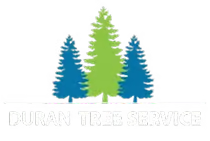4 Types of Pruning: Tree Pruning Methods You Need to Know
In simple terms, pruning helps plants and shrubs thrive and improve plant health. This guide covers trees and shrubs and other woody plants, including fruit trees and large trees, and how to prune shrubs safely.
Pruning 101: Trees, Shrubs, and Plants
Pruning is the selective removal of branches, buds, or roots to improve a tree’s health, appearance, and safety. By cutting away dead or overgrown parts, you encourage new growth, enhance structural stability, and reduce the risk of disease and pest infestations. Proper pruning techniques protect property, increase light penetration, and promote a more attractive canopy. During pruning, focus on tree branches that are weak or crossing and make deliberate pruning cuts that result in clean cuts. Thinning cuts are not the same as heading—heading shortens tips to a bud and should be used with care.
Benefits of Pruning for Your Landscape
As part of tree care, regular maintenance pruning benefits many plants, especially landscape shrubs. It:
- Improves tree health by removing diseased, damaged, or dead wood in nearby plants
- Enhances structural integrity, reducing the risk of branch failure
- Increases fruit and flower production by directing energy to key parts—this is especially true for home orchards and shrubs
- Allows more sunlight and air circulation through the canopy, preventing mold and mildew after selective thinning; the added light also helps nearby perennials
- Shapes trees for aesthetic appeal and better clearance over paths and structures, and keeps foundation shrubs from blocking views; this is important for many ornamental trees
- Extends the tree’s lifespan by reducing stress and decay. Well-timed pruning lowers stress and slows decay. Even with proper pruning, underlying root issues can threaten stability. Be alert to signs of rotting tree roots, which may require immediate attention. On mature trees, keep cuts small and strategic.
Common Types of Pruning Cuts
These methods apply to street trees, backyard plants, and formal hedges. Light heading on young shoots can create density on hedges but should be limited on trees. For certain species and formal landscapes, techniques like pollarding are sometimes used under professional guidance.
Crown Thinning
Crown thinning involves the selective removal of small branches throughout the canopy to reduce density. This kind of thinning is a form of pruning that improves structure without changing the tree’s natural form. This technique is different from heading, which removes only shoot tips. This technique:
- Opens the canopy for better light distribution and air flow
- Reduces wind resistance, lowering the chance of storm damage
- Maintains the tree’s natural shape while decreasing weight on heavy limbs
Crown Raising
Crown raising is the removal of lower branches to provide clearance for pedestrians, vehicles, and lawn maintenance equipment. This pruning practice:
- Creates a clear space beneath the canopy without altering the tree’s overall form
- Improves visibility and access in parks, streets, and yards
- Reduces risk of injury or damage from low-hanging branches
Crown Cleaning
Crown cleaning focuses on eliminating dead, diseased, or weak branches—especially broken branches—from the canopy. This pruning step:
- Preventing the spread of decay and disease within the tree
- Reducing hazards from falling limbs
- Encouraging healthy new growth by clearing out competing or damaged wood
Crown Reduction
Crown reduction reduces the overall size of the tree by cutting back branch tips to lateral branches that are at least one-third the diameter of the cut stem. This crown reduction pruning method:
- Lowers the tree’s height and spread to fit into the available space
- Reduces leverage on large branches, decreasing stress and breakage risk
- Helps preserve the tree’s natural structure better than topping; reduction is preferred over heavy heading on tree limbs
Use basic pruning cuts at proper branch unions, and where density is high, apply limited thinning cuts. Light thinning may be combined with reduction to open the canopy. When shortening small shoots on shrubs or training young trees, a careful heading cut to a strong lateral bud may be appropriate.
Best Practices for Successful Pruning and Tools
- Make clean cuts just outside the branch collar to promote healing; always locate the branch collar before cutting
- Use sharp, sterilized tools—such as pruning shears—and pruning saws to reduce the risk of disease transmission
- Prune during the tree’s dormant season when possible for minimal stress on nearby plants; for deciduous trees, winter pruning often gives the best results
- Use heading sparingly—mainly for shaping hedges or managing vigorous shoots
- Don’t remove more than 25% of live foliage in a single year
- Consult an ISA-certified arborist for high-risk or large-scale pruning projects. Experienced arborists can handle complex work safely. In some cases, especially with large removals, you may need approval first. Check whether you need a tree removal permit in Oregon before starting major work.
Effective pruning is more than just trimming branches—it’s an investment in your trees’ health, safety, Effective pruning is more than just trimming branches—it’s an investment in your trees’ health, safety, and longevity. By understanding and applying the four types of pruning—crown thinning, crown raising, crown cleaning, and crown reduction—you can customize your approach to each tree’s needs and site conditions. It’s also worth knowing that tree trimming and pruning are not the same practice, and each has its own role in landscape care. Remember to follow best practices, use the right tools, and prune at the appropriate times to minimize stress and promote rapid recovery. With planned pruning, you set trees up for long-term success. Well-pruned trees not only look better but also resist pests and storm damage more effectively. Make pruning a regular part of your tree care routine, and you’ll enjoy stronger, more beautiful trees that enhance your landscape for decades to come.
Give your trees the care they deserve with the help of experienced professionals. Whether you need pruning, trimming, or safe tree removal, our certified team is here to help. Schedule your tree service in Hillsboro today and keep your landscape healthy, safe, and beautiful for years to come.

